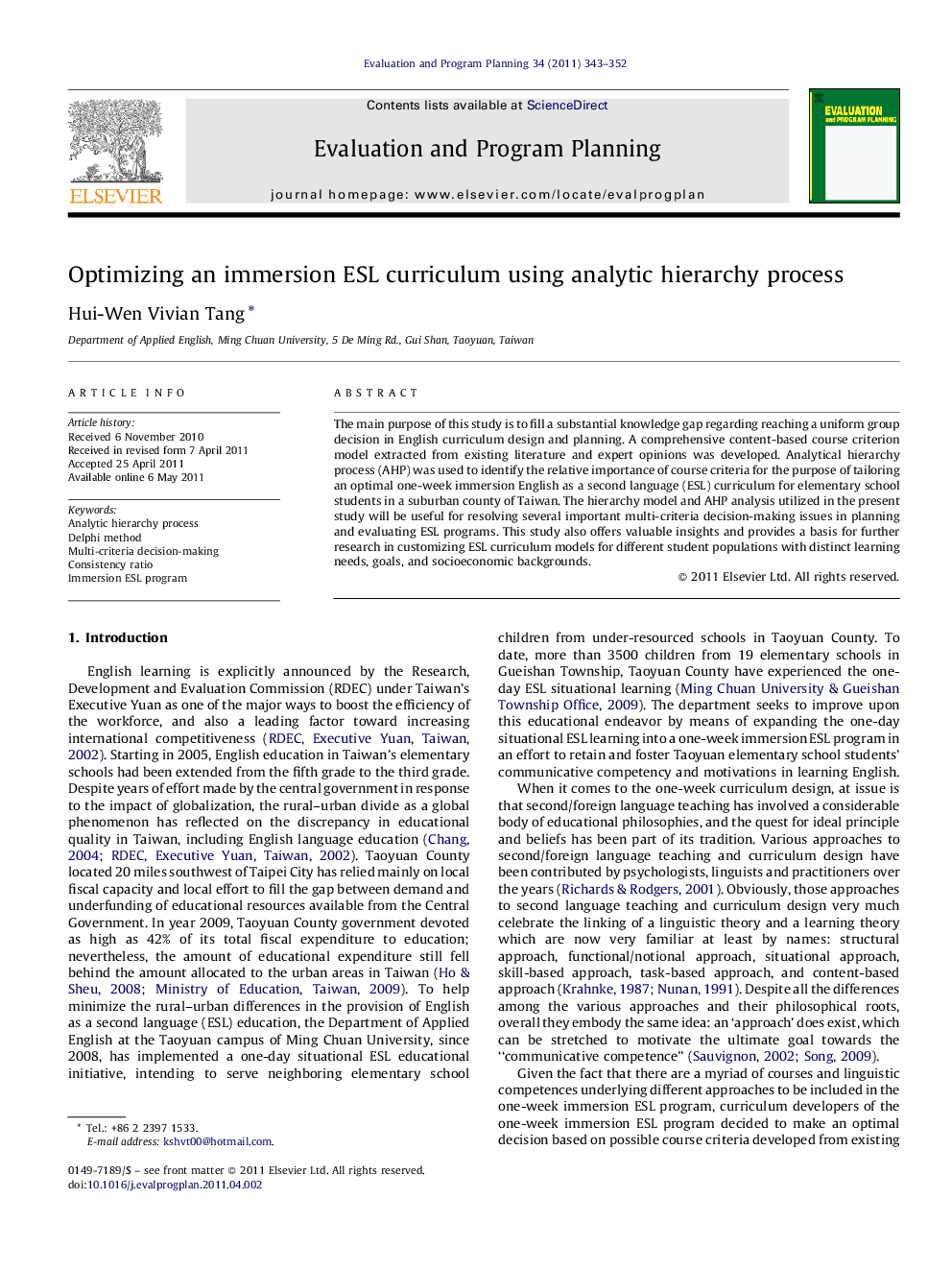| Article ID | Journal | Published Year | Pages | File Type |
|---|---|---|---|---|
| 322353 | Evaluation and Program Planning | 2011 | 10 Pages |
The main purpose of this study is to fill a substantial knowledge gap regarding reaching a uniform group decision in English curriculum design and planning. A comprehensive content-based course criterion model extracted from existing literature and expert opinions was developed. Analytical hierarchy process (AHP) was used to identify the relative importance of course criteria for the purpose of tailoring an optimal one-week immersion English as a second language (ESL) curriculum for elementary school students in a suburban county of Taiwan. The hierarchy model and AHP analysis utilized in the present study will be useful for resolving several important multi-criteria decision-making issues in planning and evaluating ESL programs. This study also offers valuable insights and provides a basis for further research in customizing ESL curriculum models for different student populations with distinct learning needs, goals, and socioeconomic backgrounds.
Graphical abstractFigure optionsDownload full-size imageDownload as PowerPoint slideHighlights► Validate the decision-making hierarchy for AHP analysis. ► Solicit the consistency ratio resulting from the pairwise comparison judgments. ► Determine the course priorities by weighting criteria using AHP analysis. ► Generate an optimal immersion ESL program.
